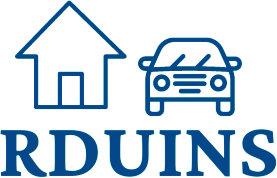Is your home insurance coverage too high? Overinsurance can waste your money. It makes you pay more in premiums than you need to. There are things you can do to see if your policy limits exceed what is necessary.
Compare Dwelling Coverage to Rebuilding Costs
Your dwelling coverage pays to rebuild your home if it is completely destroyed. Compare the limit to what it costs to rebuild in your area today. Get estimates from local builders. Or ask your insurance company for an estimate. If the dwelling limit is way above the price to reconstruct your home, your coverage is too high.
Look at Extended Replacement Cost Coverage
This is extra coverage you can add on. It pays an extra 20-25% over your dwelling limit after widespread disasters. Building costs go up from shortages in labor and materials. Think about your home’s value and location. You may not require this upgrade. Removing it can prevent overinsuring your house.
Check the Dwelling Coverage Percentage
Insurance companies recommend limits equal to 80-100% of rebuilding costs. Going above 100% signals overinsurance. Ask your agent to reassess your home’s value. Have them determine the right coverage percentage for you.
Review Additional Living Expense (ALE) Limits
ALE coverage pays for temporary housing. It covers costs if you cannot live in your home after a covered loss. The limit should cover at least 12 months of housing expenditures. Having an ALE limit far above your normal living expenses equals overinsurance.
Evaluate Other Structures Coverage
Other structures coverage is for things not attached to your house. For example, garages, sheds, and fences. Make sure the limit reflects real costs to reconstruct them. A limit of $50,000 would be too high for a basic storage shed.
Watch for Rising Premiums
If your premiums increase every year for no major reason, your home may be overinsured. Higher premiums indicate your policy covers more value than is needed. Ask your agent to reassess appropriate limits for you.
Consider an Appraisal
For an objective opinion on your home’s value, hire an appraiser. Their rebuilding cost estimate helps see if your coverage is excessive. Appraisals cost a few hundred dollars.
Review Limits Every Year
Checking your policy limits regularly is the best way to avoid overinsurance. Compare them to current replacement values. Even if higher limits make you feel more secure, overinsurance usually does not make financial sense. It has you paying for coverage you do not need.
Keeping your insurance lined up with true rebuilding costs ensures you do not pay for excess coverage. Review annually and adjust limits if they exceed current construction prices. This saves you money in premiums.
Conclusion
To prevent overinsuring your home, review your policy limits regularly. Compare them to present construction costs. If they are higher, ask your agent to reassess. Extra coverage can provide peace of mind but often does not make good financial sense. It has you paying for coverage you do not require. Making sure your policy matches your home’s actual replacement value keeps you from buying unnecessary coverage.




